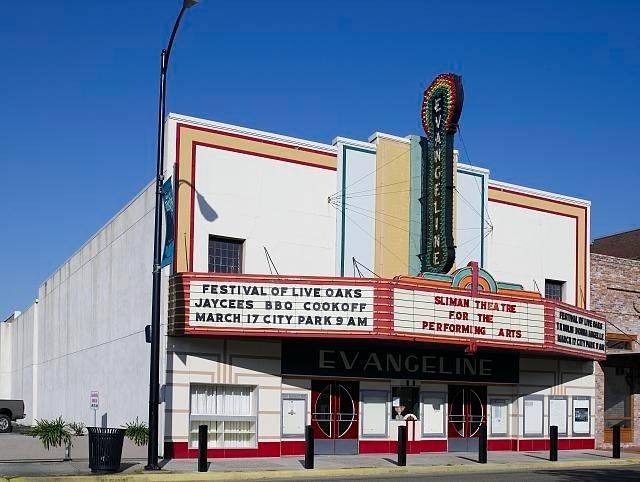Country United States Incorporated (city) 1839 Population 30,797 (2013) | Settled 1779 Local time Saturday 7:17 AM | |
 | ||
Website www.cityofnewiberia.com/site.php Weather 18°C, Wind S at 8 km/h, 88% Humidity Points of interest Shadows‑on‑the‑Teche, New Iberia City Park, Bayou Teche Museum, Bouligny Plaza | ||
New Iberia (Spanish: Nueva Iberia, French: La Nouvelle-Ibérie) is a small city in and the parish seat of Iberia Parish, Louisiana, United States. Located 30 miles (48 km) southeast of Lafayette.
Contents
Map of New Iberia, LA, USA
In 1900, 6,815 people lived in New Iberia; in 1910, 7,499; and in 1940, 13,747. The population was 32,623 at the 2000 census and 30,617 in 2010, a decrease of 2,006, or 6.2 percent, over the past decade.
New Iberia is the part of the Lafayette, Louisiana Metropolitan Statistical Area.
History
New Iberia dates from mid-1779, when a group of some 500 Malagueños colonists led by Lt.Col. Francisco Bouligny came up Bayou Teche and settled around Spanish Lake. In 1814, the federal government opened a post office, and it was officially known as "New Iberia," but postmarks shortly thereafter reveal that the town was being called "Nova Iberia" (with Latin for "new"). The town was incorporated as "Iberia" in 1839, but the state legislature resolved the situation in 1847, naming the town New Iberia.
During the American Civil War, New Iberia was occupied by Union forces under General Nathaniel P. Banks. The soldiers spent the winter of 1862–1863 at New Iberia and, according to historian John D. Winters of Louisiana Tech University in his The Civil War in Louisiana, "found the weather each day more and more severe. The dreary days dragged by, and the men grumbled as they plowed through the freezing rain and deep mud in performing the regular routines of camp life." Banks' men from New Iberia foraged for supplies in the swamps near the city.
In 1868, Iberia Parish (county) was established, and New Iberia became the seat of parish government. At first, only rented space served for the courthouse, but by 1884 a new courthouse stood on a landscaped lot in downtown New Iberia, at the present-day site of Bouligny Plaza. That courthouse served Iberia Parish until 1940, when the current courthouse was built along Iberia Street, two blocks from the New Iberia downtown commercial district.
Geography
New Iberia is located at 30°0′13″N 91°49′6″W (30.003577, −91.818454) and has an elevation of 20 feet (6.1 m). According to the United States Census Bureau, the city has a total area of 10.6 square miles (27.4 km²), all land.
New Iberia enjoys a sub-tropical climate with above average rainfall. Among the lakes is Lake Peigneur, which was formerly a 10-foot (3.0 m) deep freshwater lake until a 1980 disaster involving oil drilling and a salt mine. The lake is now a 1,300-foot (400 m) deep salt water lake, having been refilled by the Gulf of Mexico via the Delcambre Canal. There is also Lake Tasse, better known as Spanish Lake. This region has many natural features of interest, such as Avery Island, famous for its Tabasco sauce factory, deposits of rock salt, and Jungle Gardens.
Demographics
As of the census of 2000, there were 32,623 people, 11,756 households, and 8,335 families residing in the city. The population density was 3,088.8 people per square mile (1,192.8/km²). There were 12,880 housing units at an average density of 1,219.5 per square mile (470.9/km²). The racial makeup of the city was 56.99% White, 38.42% African American, 0.21% Native American, 2.64% Asian, 0.02% Pacific Islander, 0.51% from other races, and 1.20% from two or more races. 1.49% of the population were Hispanic or Latino of any race.
There were 11,756 households out of which 36.6% had children under the age of 18 living with them, 45.1% were married couples living together, 20.5% had a female householder with no husband present, and 29.1% were non-families. 25.2% of all households were made up of individuals and 10.8% had someone living alone who was 65 years of age or older. The average household size was 2.70 and the average family size was 3.24.
In the city, the population was spread out with 29.8% under the age of 18, 9.7% from 18 to 24, 26.8% from 25 to 44, 20.4% from 45 to 64, and 13.3% who were 65 years of age or older. The median age was 34 years. For every 100 females there were 87.8 males. For every 100 females age 18 and over, there were 83.6 males.
The median income for a household in the city was $26,079, and the median income for a family was $30,828. Males had a median income of $30,289 versus $16,980 for females. The per capita income for the city was $13,084. About 24.9% of families and 29.5% of the population were below the poverty line, including 40.8% of those under age 18 and 20.8% of those age 65 or over.
Culture
Festivals
Education
Iberia Parish School System serves the city.
Catholic High School is a Catholic high school in New Iberia.
Westgate High School
